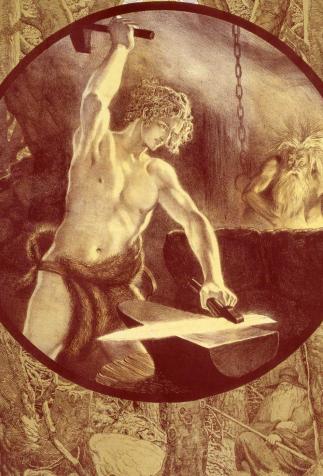Eddur and Sagas: Eight Centuries of Myths Helping Authors
Among the legends of the Far North that are so omnipresent in current fantasy, Eddur and Sagas are two Norse mythology genres that have heavily influenced contemporary authors.
A Whole World in Two Eddur
Medieval Icelandic texts, including the two Eddur (singular: Edda) and the Sagas, are the main sources for Norse mythology. Having been written after the Christianization of the island, they do not constitute first-hand evidence of Norse peoples’ pre-Christian beliefs.
The first source, which is considered to be the most important and explicit, is Snorri’s Edda or the Prose Edda (thirteenth century). This text, which dates to about 1220 and has been attributed to the Icelandic nobleman and scholar Snorri Sturluson, is similar to many tales about Scandinavian deities and heroes. Yet rather than having a religious vocation, it was actually composed as a manual of poetics, meant to demonstrate verse forms and appropriate subjects to young poets. The original manuscript of this anthology has disappeared. Four different later manuscripts and fragments, which are the source material for modern editions, are all that now remmains. The idea of arranging the divinities into a kind of pantheon is found essentially in the Prose Edda.
Next comes the Poetic Edda (thirteenth century). It is an anthology of poetry discovered in manuscript form in 1643 by Bishop Brynjólfur Sveinsson, who christened the collection in reference to Snorri’s Edda. The Poetic Edda is a collection of poems written in Old Norse, a medieval Scandinavian language. The poems, written from the ninth to the eleventh centuries by unknown authors, come from Norway and Greenland as well as Iceland itself. The tales they contain refer to Scandinavian gods and heroes in sometimes cryptic ways. Tolkien’s trolls that turn to stone in sunlight (The Hobbit, 1937), are borrowed from the Alvíssmál, a poem found in the Poetic Edda. In the poem, the god Thor outwits the dwarf Alvíss (“All-Wise”) by keeping him engaged in verbal jousting throughout the night, until the sun rises and the dwarf turns to stone.
Lastly, the Sagas are a series of varied tales encompassing different types of prose texts. The word saga (plural: sögur), is a generic term used to designate a range of different narratives, including heroic Germanic and Scandinavian heroes, historical accounts, and stories about saints and bishops, as well as translations of texts from continental Europe.
From Historical Accounts to Slaying Dragons: Sagas’ Influence on Fantasy
Fantasy has drawn essentially on what are known as the “legendary Sagas,” which is where most of the supernatural elements are found, and which were also written down later. The Völsunga Saga (thirteenth century) – which relates the story of Sigurd, who slayed the dragon Fafnir – is undoubtedly one of the best-known narratives of this type. It has been reprised repeatedly in fantasy, particularly during the nineteenth century, by such illustrious authors as William Morris and Tolkien, among others. Scholars have focused attention on the connections that can be drawn between it and the Brothers Grimm’s Song of the Nibelungen, which inspired Richard Wagner in the nineteenth century. In The Lord of the Rings (1954-1955), Narsil, the broken sword re-forged for King Aragorn and rechristened Anduril, was borrowed from the The Völsunga Saga. In the saga, the sword Gram (Gramr in Old Norse), thrust by Odin into a tree trunk for whichever man can draw it out, will be broken by the god himself during a battle, then re-forged by Regin for Sigurd to use to slay the dragon Fafnir. The prolific author Poul Anderson rewrote the Saga of Hrolf Kraki (1973), a history of the Skjoldung, the Danish royal family from which Hrolf Kraki descended.







